
![]()
Overview
The Others, referred to by the DHARMA Initiative as the Hostiles or the Natives, and by the tail section survivors of Oceanic Flight 815 as Them, are a mysterious group of people living on the Island who were followers of Jacob through the intermediary of Richard Alpert. Jacob never showed himself to his people, and they took orders from a succession of leaders including Eloise Hawking, Charles Widmore, Benjamin Linus and briefly, John Locke.
History Overview
Jacob had long been bringing people to the Island to prove his nemesis, the Man in Black, wrong about his view of human nature. According to Jacob, it is the Man in Black’s belief that all people are inherently corruptible, whereas Jacob wished to show that people could know the difference between right and wrong without his interference. For some time, the people Jacob brought to the Island were simply killed by the Man in Black or each other, without Jacob stepping in. In 1867 however, Richard Alpert arrived to the Island on the Black Rock and, in exchange for the gift of agelessness, agreed to act as an intermediary between Jacob and the people he would bring to the Island. This was essentially the beginning of the Others.
Prior to Ben’s term, the leadership of the Others seemed shared between Charles Widmore and Eloise Hawking, who had a “complicated” love life together. Before them, Richard Alpert appeared to be leading the Others in lieu of a “leader” in 1954; he did mention he had a superior that he answered to. It is unclear if he was referring to an unseen leader or simply to Jacob himself.
According to Richard, only one leader of the Others is appointed at a time, and this person must undergo numerous tests to get the position. According to Benjamin Linus, the leader still has to answer to Jacob. Even while he was the leader of the Others, Ben never met Jacob during his time in that role. Aside from Ben, who finally encountered Jacob in “The Incident, Part 2”, the only Other definitively established as having firsthand communication with Jacob is Richard Alpert. Benjamin Linus’ term as the leader came sometime after the Purge, when he ousted and banished previous leader Charles Widmore. Ben stayed in power until he moved the Island in 2004, when John Locke took his place. John’s term was extremely short, however, for he soon unwillingly time-flashed throughout the Island’s history in a journey that eventually sent him off-Island, ending in his demise. When “Locke” returned to the Island three years after leaving, it was actually the Man in Black in Locke’s form.
The earliest time frame that shows the Others on the Island is in 1954, but they have been on the Island long enough to be referred to as “indigenous”. (LaFleur-Enhanced transcript) (“Jughead”) They also speak various languages with each other, including Latin and Russian, to keep from being understood by foreigners. They actively recruit people from the outside world to join them on the Island (Dr. Juliet Burke, for example), and, by 2004, very few of their members had been born on the Island due the deaths of their pregnant women from an as-yet uncured medical affliction that plagued the Others some time after 1977.
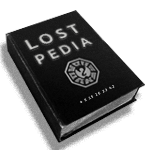 They appear to have considerable wealth and power in the outside world, evidenced by the reach of their front company Mittelos Bioscience. The Others are in possession of the secret knowledge of the bearing by which the Island may be left, and also know how to locate it again to return (though the DHARMA Initiative later discovered reliable ways of getting to and from the Island). After the Purge, they gained the use of the Galaga submarine from the DHARMA Initiative, allowing them to clandestinely come and go from the Island at will.
They appear to have considerable wealth and power in the outside world, evidenced by the reach of their front company Mittelos Bioscience. The Others are in possession of the secret knowledge of the bearing by which the Island may be left, and also know how to locate it again to return (though the DHARMA Initiative later discovered reliable ways of getting to and from the Island). After the Purge, they gained the use of the Galaga submarine from the DHARMA Initiative, allowing them to clandestinely come and go from the Island at will.
The Others use rings of black ash to keep out (or possibly in) the smoke monster. The smoke monster can cross the perimeter of ash only when its continuity has been disturbed.
Image Source | Image Source | Source
Further Reading
Decoded Members of The Others
Primary “Others”
Secondary “Others”
Key Episode(s) to Decoding the Faction
LOST’s Egyptian Origins
Evidence throughout LOST suggests that a group with a strong cultural relation to Ancient Egypt lived on the Island either before or after Jacob became protector of the Island, and before the arrival of the Black Rock. They presumably constructed the Statue of Taweret and other Island monuments, encountered previous versions or the current Man in Black version of the Monster, and left a number of hieroglyphic inscriptions. At some point at least some of them left the Island for unknown reasons, and their society disappeared.
Aside from these glimpses into the Island’s past, Lost contains other allusions to Egypt. Any discussion of Egyptian mythology in Lost should be prefaced, however, with the warning that the Egyptian pantheon comprises over five thousand years of cultural evolution, and various gods were defined and worshiped differently depending on the time and place as well as the balance of power among the different city-states that made up Egypt.
Island History
Evidence throughout the show suggests that at some point a group of ancient Egyptians, or at least sharing traditions and practices with ancient Egypt, lived on the Island. There is limited evidence for what this time was like, as it was never depicted directly. However, we can draw some conclusions about this civilization from surviving artifacts.
The Egyptians were active on the Island at some point after Mother slaughtered Claudia’s people, Jacob became the Island’s protector, and the Man in Black was transformed into the Monster. When Mother killed the intruders and filled in the well where the Man in Black was building the Frozen wheel, the walls of the underground chamber were blank and the wheel was not yet put into place. (“Across the Sea”) However, when Ben turns the wheel in 2004 and Locke does so at an unknown time, the wheel has been mounted and its mechanism completed, and the chamber has been inscribed with hieroglyphs. (“There’s No Place Like Home, Part 3”) (“This Place Is Death”) It us unknown whether the Egyptians completed the wheel mechanism, but they visited and inscribed the chamber prior to 1867, for Locke is in the chamber in a time when the statue of Taweret is still visible.
The Egyptians may have built, or at least used, a number of other important Island structures. The Temple (the wall, within the Temple, and beneath the Temple), the Lighthouse, the Tunnels, and Ben’s secret room all appear ancient, and are all inscribed with hieroglyphs. (“The Shape of Things to Come”) (“Whatever Happened, Happened”) (“Dead Is Dead”) However, hieroglyphs are also used by other groups on the Island: Jacob weaves hieroglyphs into his tapestry, and the DHARMA Initiative uses hieroglyphs to signal system failure on the Countdown timer in the Swan, as well as teaching students about them in the school at the Barracks. (“Lockdown”) (“Some Like It Hoth”) (“The Incident, Part 2”) DHARMA’s use of hieroglyphs was prompted by their place in Island history, but we cannot definitively be sure from where any particular hieroglyphic program comes. (Access: Granted#Hieroglyphics)
The Egyptians have apparently encountered the Monster. In the chamber beneath the Temple wall where Ben goes to be judged by the Monster, he discovers a mural that appears to depict the Monster facing the Egyptian god Anubis. (“Dead Is Dead”)
At some point, at least some of the Egyptians seem to have left the Island. Jacob’s tapestry, which includes hieroglyphs and the Eye of Horus, depicts figures on boats sailing away from the Island; the Statue of Taweret was portrayed on the Island, but this part of the tapestry was torn away and left in Jacob’s cabin, where it was discovered by Ilana. (“The Incident, Part 1”) (“The Incident, Part 2”) The time at which the Egyptians left is uncertain, but must have been before 1867 when the statue was destroyed. (“Ab Aeterno”)
Island Locations
The Four-toed statue depicts the Egyptian deity Taweret.
It was officially confirmed to be Taweret, a deity of protection in pregnancy and childbirth, but also the demon-wife of Apep, the original god of evil.
The Lighthouse seems similar in design to the Lighthouse of Alexandria, one of the Seven Wonders of the Classical World.
Hieroglyphs & Symbols
According to the producers, the hieroglyphs state “Underworld”.
The hieroglyphs on the countdown timer are red and black. In Egyptian mythology, red is the color of chaos, destruction and evil. Additionally, hieroglyphs inscribed in red in Egyptian ritual books were meant to be emphasized and were often used for significant passages, titles, or the names of gods.
Engravings
A large engraving in the back of The Temple appeared to depict the Egyptian God Anubis and the Monster. (“Dead Is Dead”).
Anubis is a jackal-headed god associated with death, mummification, and the afterlife in Egyptian mythology. He is often depicted weighing the hearts of the deceased against a feather symbolic of the goddess Maat (goddess of truth and order) in “the hall of truth”, where the dead are judged before the gods. Souls who fail this judgment are fed to the monster Ammit. Anubis is also called He Who Keeps The Gates, guarding the boundary between the real world and the realms of the gods.
Religion
Jacob’s tapestry depicts the “Eye of Horus” (also known as the Eye of Ra or the Wedjat), an ancient Egyptian symbol of protection and royal power from deities. In the Egyptian language, the word for this symbol was “Wedjat”. It originally was the eye of one of the earliest of Egyptian deities, Wadjet, who later became associated with Bast, Mut, and Hathor as well. Wedjat was a solar deity and this symbol began as her eye, an all seeing eye.
The first name of Horace Goodspeed is homonymous with “Horus“, the Greek name for a falcon-headed Egyptian god. In myth, the eye of Horus was wounded when he battled with Seth for the throne of Egypt, but was healed by Hathor.
Jacob handed Hurley a wooden ankh containing a piece of paper with a list. Hurley gave the wooden ankh to Dogen when they arrived at The Temple. Paul, LaFleur’s predecessor as DHARMA Initiative Chief of Security, was wearing an ankh around his neck when he was killed by the Others. (“The Incident, Part 2”) (“LA X, Part 2”) (“LaFleur”)
Miscellaneous
When Locke visits Hurley in Santa Rosa Mental Health Institute, Hurley is drawing a picture of the Great Sphinx of Giza. Sphinxes were tomb guardians in Egyptian myth and were associated with the lioness-headed goddess Sekhmet. (“The Life and Death of Jeremy Bentham”).
When a drunk Roger Linus comes to chase off Jack from a classroom Jack is clearly seen erasing a lesson on Egyptian hieroglyphs from the chalkboard. (“Some Like It Hoth”)
While Walt is studying birds of Australia, he mentions he doesn’t care about birds of Australia and says “shouldn’t we be studying birds of Egypt or something?” (“Special”)
Sayid and Essam Tasir were roommates at Cairo University and went to the beach at Sharm el-Sheikh on the Sinai peninsula before their English exam. (“The Greater Good”)
Mr. Cluck’s Chicken Shack is shown to be a success in Egypt. (“Everybody Loves Hugo”)
Egyptian Trivia
In the tale of the shipwrecked sailor from Ancient Egypt’s Middle Kingdom, a shipwrecked sailor confronts a monster, specifically a huge serpent on a mysterious and bountiful island, and the monster tells the sailor that once he leaves the island, it will become water and he will not be able to return. The sailor is scared from the monster at first but then the serpent starts helping the sailor survive on the Island.
The biblical Jacob spent his last 17 years living in Egypt.
LOST University offers a course on hieroglyphs.
Images Source | Image Source | Image Source | Image Source | Image Source | Source

The Egyptian Pantheon consisted of the many Gods worshipped by the Ancient Egyptians. A number of major deities are addressed as the creator of the cosmos. These include Atum, Ra, Amun (Amen) and Ptah amongst others, as well as composite forms of these Gods such as Amun-Ra. This was not seen as contradictory by the Egyptians. The development of Egyptian religion in the New Kingdom lead some early Egyptologists such as E.A. Wallis Budge to speculate that the Egyptians were in reality monotheistic. Others such as Sir Flinders Petrie considered the Egyptians to be polytheists. Erik Hornung argues that the best term to apply to their religion is ‘henotheism’ which describes ‘worship of one God at a time but not a single God.’
The Egyptian term for Goddess was neṯeret (nṯrt; netjeret, nečeret) and the term for God was neṯer (nṯr; also transliteratednetjer, nečer). The hieroglyph represents a pole or staff wrapped in cloth with the free end of the cloth shown at the top. The use of this sign has been connected to the flag poles at the entrance towers of Egyptian temples. Alternative glyphs for Gods include a star, a squatting human figure or a hawk on a perch.
Background and History
The Egyptian religion has a long history. Earliest images include the symbols for the goddess Neith, many fertility figurines and versions of the vulture (Nekhbet) and cobra (Wadjet) goddesses which were borne on Egyptian crowns from predynastic and protodynastic periods through to the Roman period.
The many types of animals that are native to Northern Africa were immensely influential in nearly every significant aspect of the Ancient Egyptian way of life. The people were highly dependent on, and sometimes equally highly cautious of, different animals in many differing ways. The presence of certain animals (or lack thereof) factored with their behavior and sheer numbers, could easily mean the difference between life and death to an individual Egyptian person in one common type of situation; just as easily as they could mean the difference between prosperity and poverty to a person in another type of situation. Perhaps most importantly, however, certain animals could also mean the difference between peace and war for the entire nation. With regard to religion, there was a vast amount of varying forms of symbolism relating to animals embraced by the Ancient Egyptians — the symbols connoted by various animals were consistently recurring themes in their religious system. For instance, there were many cow goddesses, such as Hathor and Nut, reflecting the fact that cattle were domesticated in Egypt by 8,000 B.C.. By 5,500 B.C., stone-roofed subterranean chambers and other subterranean complexes in Nabta Playa were constructed for the express purpose of housing the tombs of ritually sacrificed cattle. Wild, as well as domesticated animals, inspired a truly enormous amount of religious symbolism, take for instance the fierce lioness, personified by Sekhmet as the warrior goddess in the south.
By 4,000 B.C. Gerzean tomb-building was seen to include underground rooms and burial of furniture and amulets, a prelude to the funerary cult of Osiris which appears in the 5th Dynasty.
The pharaoh was deified after death, and bore the title of nṯr nfr “the good god”. The title, “servant of god” was used for the priesthood, ḥmt-nṯr ‘priestesses’ and ḥm-nṯr ‘priests’. Over the great period of time covered by Ancient Egyptian culture the importance of certain deities would rise and fall, often because of the religious allegiance of the king. However the worship of some deities was more or less continuous.











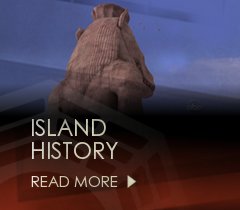




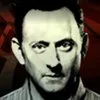





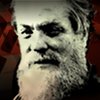




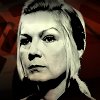






































































You must be logged in to post a comment.